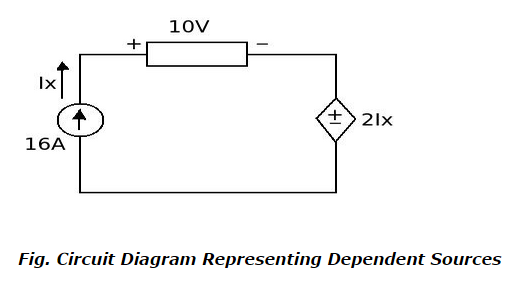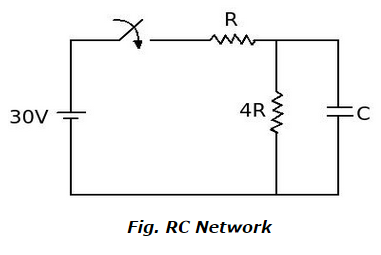Networks - GATE practice papers - Electronics & Communication
Here, you can read Networks multiple choice questions and answers with explanation.
1) Which theorems do not support the similarity of handling dependent and independent current and voltage sources ?
A. Thevenin's & Norton's Theorems
B. Superposition & Norton's Theorems
C. Maximum Power transfer & Reciprocity Theorems
D. Millman's & Tellegen's Theorem
Manipulation of independent and dependent voltage and current sources is almost similar in almost all types of theorems except Thevenin's , Norton's and superpositon theorems especially for the calculation of equivalent impedances.
(Marks : 02)
- Published on 19 Oct 15
a. A & B
b. C & D
c. A & C
d. B & D
|
Answer
Explanation
|
ANSWER: A & B
Explanation:
No explanation is available for this question!
|
|
2) What is the function of dependent source in the circuit diagram shown below?

(Marks : 02)
- Published on 19 Oct 15
a. It delivers 256 W
b. It absorbs 256 W
c. It delivers 512 W
d. It absorbs 512 W
|
Answer
Explanation
|
ANSWER: It absorbs 512 W
Explanation:
From the given network,
Power = V x I
= (2 Ix) x Ix
= 2 I2x
Since Ix = 16A
P = 2 x (16)2
= 512 W (absorption)
Hence, the total power of about 512W is absorbed in the given circuit.
|
|
3) What will be the value of time constant for the network shown below?

(Marks : 02)
- Published on 19 Oct 15
a. 5RC
b. 4RC
c. (4/5) RC
d. RC /5
|
Answer
Explanation
|
ANSWER: (4/5) RC
Explanation:
By replacing the voltage source in terms of internal impedance, the equivalent circuit is shown below.
From the above equivalent network, it is obvious that
Req = (R x 4R) / 5R
= 4R /5
Also, the time constant (τ) = Req x C
= (4 /5) RC
|
|
4) Which statements represent the properties of a tree according to the network graph theory ?
A1 : There exists only a single path between any pair of nodes.
A2 : The rank of a tree is similar to the rank of graph
A3: A tree does not contain any node on the graph
A4 : A tree comprises all closed paths
(Marks : 02)
- Published on 19 Oct 15
a. A1 & A2
b. A3 & A4
c. A1, A2 , A 3 & A4
d. None of the above
|
Answer
Explanation
|
ANSWER: A1 & A2
Explanation:
Only the statements A1 & A2 satisfy the properties of a tree. The statements A3 & A4 are not precise because a tree contains all the nodes on the graph and does not contain any closed path.
|
|
5) Which two-port device has a provision to simulate the equivalent values of inductance? (Marks : 01)
- Published on 19 Oct 15
a. Inductor
b. Capacitor
c. Transformer
d. Gyrator
|
Answer
Explanation
|
ANSWER: Gyrator
Explanation:
Gyrator is a four terminal device whose coefficient value is dependent on the Op-amp parameters as well as externally connected R,C values.
It exhibits a unique feature of impedance inversion phenomenon due to which the input impedance is capacitive for an inductive load impedance and vice-versa. In addition to this, simulation of equivalent inductance values is also a major function performed by a gyrator
|
|
6) How many number of trees are possible for a network possessing 'n' nodes? (Marks : 01)
- Published on 19 Oct 15
a. 2n-1
b. 2n+2
c. n[1/ n+2]
d. nn-2
|
Answer
Explanation
|
ANSWER: nn-2
Explanation:
For any kind of network, the number of trees can be always determined on the basis of its branches and nodes. This can be implied as,
No. of trees = nn-2
where, n represents the nodes & n-2 represents the number of branches in a tree
|
|
7) Which element of graph theory specifies a subgraph of a graph by allowing the incidence of exactly two branches at each node? (Marks : 01)
- Published on 19 Oct 15
a. Twig
b. Path
c. Loop
d. Link
|
Answer
Explanation
|
ANSWER: Loop
Explanation:
According to the properties of a loop, it ensures the presence of at least two branches in addition to exactly two paths between any pair of nodes in it .Besides these, the number of branches are always equal to the number of nodes and hence, the two branches are exactly incident at each node.
|
|